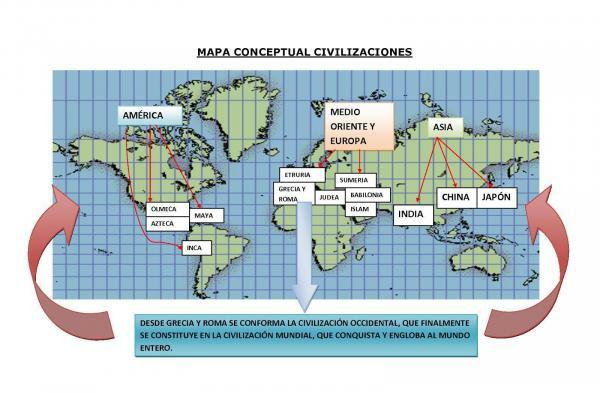The origin of the Sumerians

Image: The alternate reality
The beginning of civilization originated in the geographical area of the Near East, a territory where different media converge such as the desert, oasis, coasts... All this gives that place a great dualism where we will find the most inhospitable places in the world and at the same time very fertile slopes where the first civilizations of the world would develop. world. In this lesson from a TEACHER we bring you a summary on the origin of the Sumerians, one of the first civilizations that was also the creator of writing, being known as cuneiform writing.
The region of Mesopotamia means zone between two rivers, which are the Tigris and the Euphrates. Within this area, in addition, we can find three well differentiated parts:
- The high area where we will find the skirts of the mountain chain
- The middle zone, a great plateau where life could only be conceived on the slopes of rivers
- And the lower area, adjacent to the mouth of the Persian Gulf
Within our summary on the origin of the Sumerians we must focus on the lowest area of the region, where
around 3,500 BC C. the people of the Sumerians settled which were also known as blackheads. This region would come to be known as Sumer.The origin of this town is not known and some authors affirm that they could come from the mountains, others from the desert and of course, the most skeptical will believe that it is a people from another planet, due to a series of findings found during the excavations.
In this other lesson we will discover the history of ancient Mesopotamia.

Image: Human origin
Little by little this town was settling in a series of villages that were organizing around the shadow of the temple. This institution was the noblest area of the villages that began to emerge and little by little they became bigger and bigger until they became cities.
The phenomenon of civilization is found from the social organization since it came from the hand of the temples that began to carry out commercial activities, redistribution of materials that were produced in the city, in addition to being those that carried the foreign policy of the cities.
Over time, a series of inventions They would cause it to be one of the most important peoples in the world due to the legacy it left to the rest of later civilizations, some of these inventions were:
- Wheel: invented in the year 3,500 a. C. has its beginnings in that town, an invention that greatly facilitated the transport of goods
- Cuneiform writing: appeared between 3300-3000 a. C. linked to the organization of the temple to be able to control what it owned, that is, a system was created to keep the accounts of the temple
- Civilization: cities were the elements par excellence and the Sumerians were the first to create them; previously we will find throughout Mesopotamia a series of more or less large villages
- Laws: when the city was created and a system of organization was stipulated, they had to create a series of rules that all citizens had to comply with in order for the community to move forward
- Medicine: of the first writings that we conserve, the Sumerians will be the ones who most advance in the system of medicine, without doubt, because it was a fairly belligerent town, where each city was a state and all had conflicts with all
- Adobe bricks: the ziggurat is the most recognized building of the Sumer civilization, which was made of adobe and brick baked in its lower part so that it would not crumble. This is because, in the area, mud is the only raw material for construction, we will hardly find trees or stone quarries
In this other lesson we will discover the differences between the Sumerians and Akkadians.

Image: The Green Compass
To conclude with our summary on the origin of the Sumerians, we must return to the origin of this people to critically comment on the theories that state that said people are alien or that they had contacts with they.
It is well known to all, the legend of the anunakis, a group of gods created from Anu, the lord of the Sumerian sky and who was especially in charge of the affairs of the underworld. According to the legends, this group instigated the Igigi (a group of lower gods) to work for them but there was a rebellion and they stopped doing it. In this way, the god Enki would create mankind for it to work for the gods.
Having commented on the creation of humanity above, we must continue speaking on this occasion of the role of the temple and the Sumerian monarchy. In this way we must know that the temple rituals were very sectarian activities where only some Members of the clergy could have access to the interior of the temple, being prohibited for the rest of the population. Similarly, the monarchy claimed that they came from heaven, sent by the gods themselves to work for them.
This mythology, coupled with the discovery in skulls with dolichocephaly and brachycephaly, have resulted in the legend that the Sumerians had direct relationships with aliens and that thanks to them writing was created and that the ziggurat was the building reserved for their visits beings.
However, we have to say that the appearance of deformed skulls in many civilizations has served to differentiate themselves from the rest of society, it was a way of resembling the gods, so from childhood they were they compressed the heads to deform them; in this way, in view of the rest of the population, they were designated as the chosen ones of the gods.

Image: Human origin



